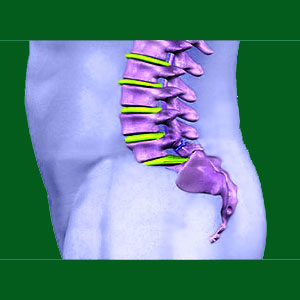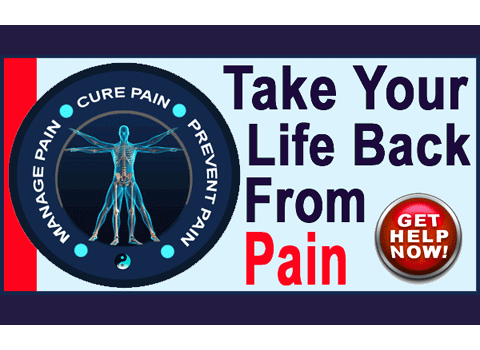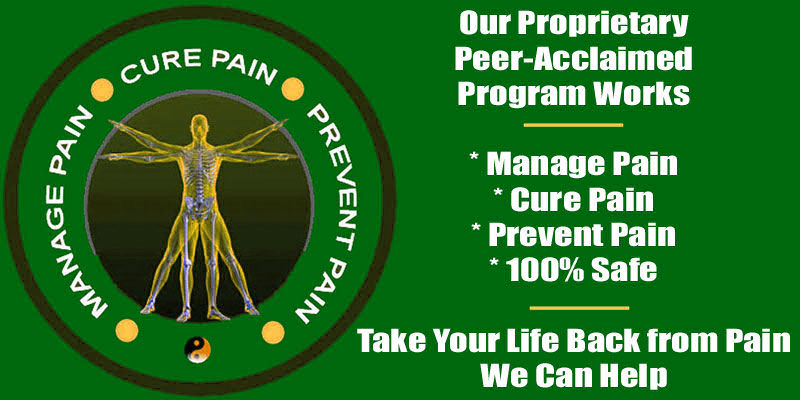
Do you understand the spondylolisthesis nocebo effect? If not, then you might be experiencing pain unnecessarily. The nocebo imparted by the spondylolisthesis diagnostic process can and will harm you. This is proven scientific fact. However, with a bit of knowledge, you can negate the detrimental effects of the nocebo effect and be free from much suffering, despite the continuation of the structural vertebral migration abnormality.
Nocebo is a much misunderstood topic. The effect is most often enacted unwittingly by well-meaning doctors and therapists and then fostered by a patient’s family and friends. All the good intentions aimed at the patient can actually have very damaging effects when it comes to their future health and wellness. In other cases the nocebo is purposefully inflicted by doctors for specific reasons which will be detailed in this investigative report.
This discussion seeks to explain the power of the nocebo effect in association with spondylolisthesis. We will examine how the effect is propagated and why it is inflicted. Finally we will explore its many negative consequences.
Spondylolisthesis Nocebo Effect
The nocebo effect does not harm because of structural pathology, disease or injury. Instead, it enacts negative consequences to health and wellness by changing the mind’s perception of the state of the body and creating fear and anxiety. The nocebo effect is the exact opposite as the placebo effect. Instead of providing actual health benefits despite having no intrinsic therapeutic value, the nocebo causes harm, pain and anxiety, despite no actual damage, illness or pathology being present. The effects on health are caused by the mind, but are expressed 100% in the physical body.
The nocebo effect is maximized when the person’s mind looks for a justification to create pain or suffer functionally-limiting physical consequences due to some perceived problem in the body. Of course, the mind can simply create pain anywhere, as it tends to do with common headaches, stomach issues and other conditions. However, when structural justification is available, the mind can concoct a more convincing syndrome that will tend to linger longer and have more severe effects than these simple daily occurrences. This is the case with most structural scapegoats in the back pain industry.
The nocebo tells the mind that the body is sick, traumatized and might never be the same. This feeling of being “damaged goods” really imparts tremendously powerful negative health consequences. Nocebo has been documented many times in medical literature, with extreme cases involving people who thought they would die and did exactly that, despite not suffering any pathological health issues. More common occurrences involve the epidemic number of chronic pain conditions that are fostered by the diagnostic process, rather than by any particular structural mechanisms of action. In fact, the majority of chronic pain is a direct result of the nocebo, while even structural cases are negative influenced by nocebo in virtually every patient.
We write much about the nocebo effect in our many websites. We have already covered much ground and do not want to repeat it over and over again here. Therefore, if you want to learn all the details, search nocebo on our search tool and enjoy our many detailed essays on the topic.
Suffering a Nocebo Reaction
The nocebo effect can and usually is imparted accidentally. Doctors tend to caution spondylolisthesis patients not to do things that might injure them. They often become very stern in the warnings, especially if the patients report exacerbated pain after performing some specific activity, such as exercise or housework. Doctors might tell patient that they have abnormal spines that require special attention or warn them outright that they are more susceptible to painful injury.
Family and friends can worsen this effect, since they will continuously caution patients not to “overdo it” or hurt themselves while performing normal and innocuous physical tasks. All these negative reminders tell the mind that the body must truly be damaged and deficient.
The mind comes to expect pain due to many possible reasons and soon, the pain actually materializes. However, this pain is psychogenic and not enacted by any pathology. It is instead a defense mechanism created by the mind to serve psychoemotional needs. We detail why this occurs in our article covering psychosomatic spondylolisthesis pain and highly recommend reading this patient guide if you ever expect to fully understand the working of the mindbody connection and its consequences on health.
In some cases, the nocebo effect is purposefully delivered by care providers who want to advance the patient directly into profitable treatment or surgery. In order to accomplish this successfully, and to minimize the chances of the patients wanting to seek a second, more objective diagnostic opinion, these greedy care providers will really spread the nocebo on thick. They will tell the patient that their life or health is under direct threat and that treatment is desperately needed. They might warn of sexual dysfunction, paralysis, incontinence or the inability to work. All of these predictions are certainly possible consequences of extreme listhesis, but are virtually never likely to occur given the current parameters of the newly diagnosed patient’s condition. In essence, the doctor scares the patient to death, forcing them to acquiesce to money-generating care that is not currently needed. We see this very often and have files full of documented cases, many of which eventually became civil lawsuits for malpractice. Some of us here at The Cure Back Pain Network have been victimized like this ourselves, so we can provide first-hand knowledge of both the terrifying experience and the horrific consequences.
Spondylolisthesis Nocebo Consequences
The nocebo can impart many proven negative health effects including any or all of the following:
The patient might begin to experience spondylolisthesis pain when they never did before. This is common even when the patient has demonstrated the listhesis for many years, but only learned about the condition recently, typically when testing for some unrelated condition.
If the patient already suffers pain, the pain will generally worsen and often begin to include new neurological symptoms, such as paresthesia, weakness and functional deficits. There will be no verifiable structural evidence available to identify pathology in most of these cases. Pain might begin to resemble examples that patients have read or otherwise learned about.
Patient’s pain will usually become chronic if it was previously acute or episodic. Duration of each episode will increase, as will severity.
Symptoms caused by nocebo will rarely correctly mimic true versions of listhesis-enacted pain, although some might. More commonly, symptoms will be far too wide-ranging, and will be illogical from a purely structural viewpoint. This is one of the best ways to differentiate mindbody syndromes from true anatomically-motivated syndromes.
Patients are statistically unlikely to respond well to any type of treatment, since the underlying true source of pain is of mindbody nature. Most treatments will provide temporary placebo effect, if any positive benefits at all, including surgical interventions. Pain will usually grow in size, scope and duration until it disables the patient or until the true nature of the syndrome is finally discovered and rectified using knowledge therapy.
Spondylolisthesis > Psychosomatic Spondylolisthesis Pain > Spondylolisthesis Nocebo



